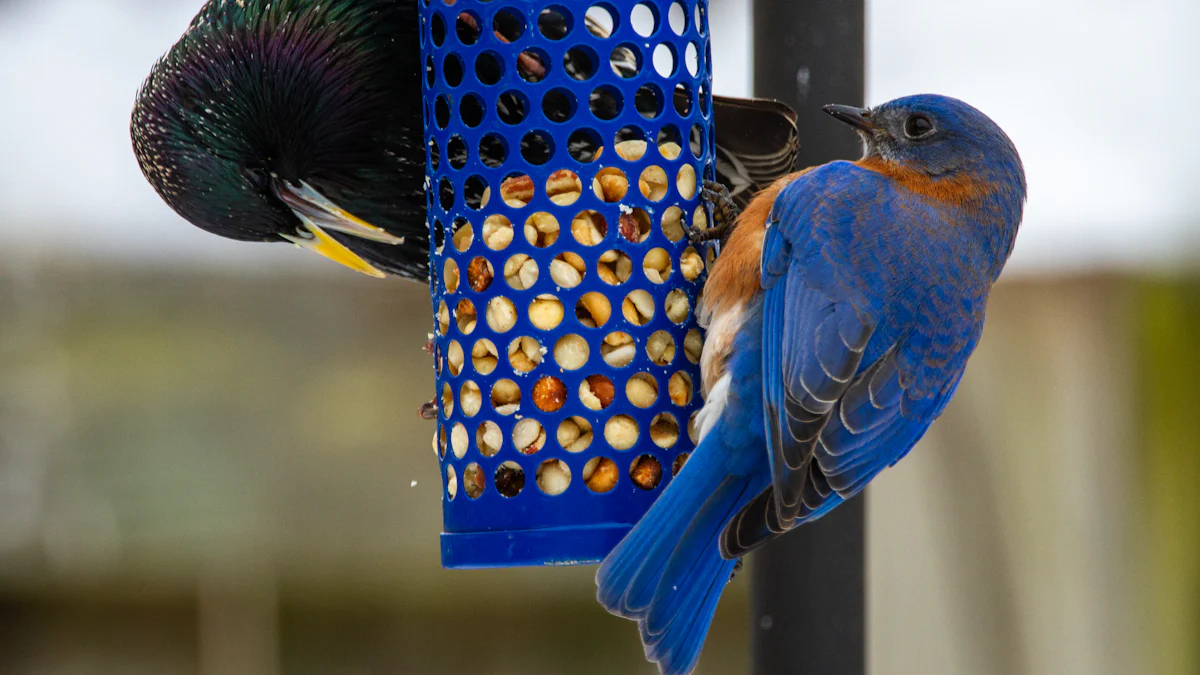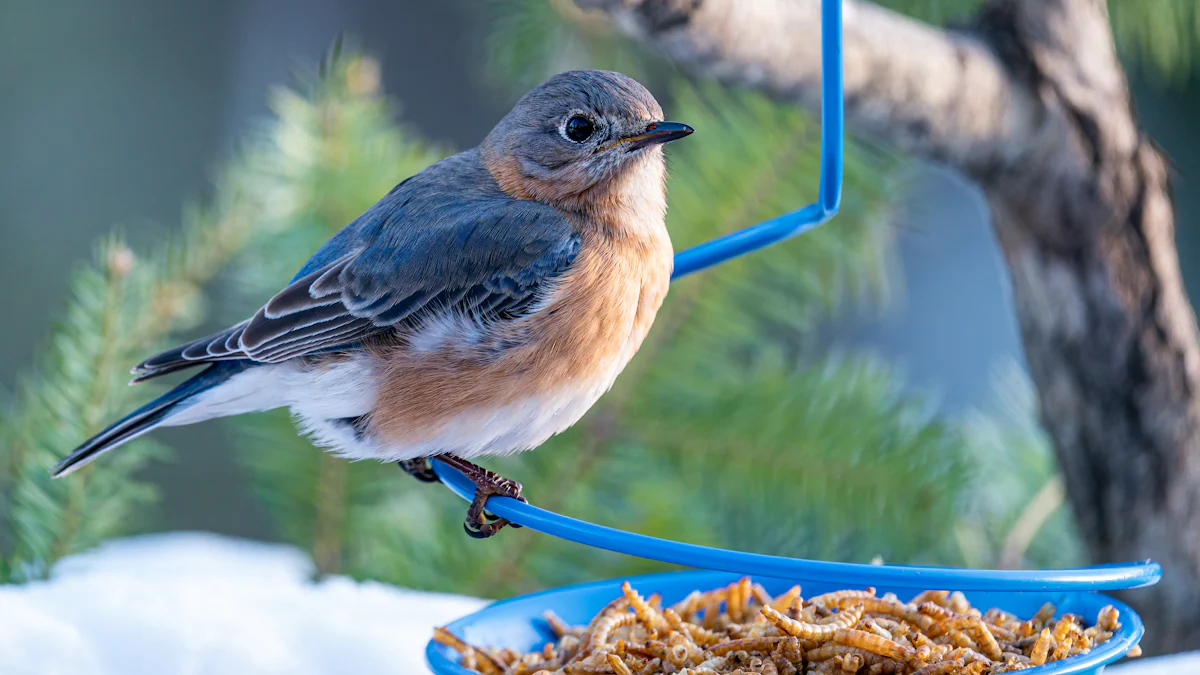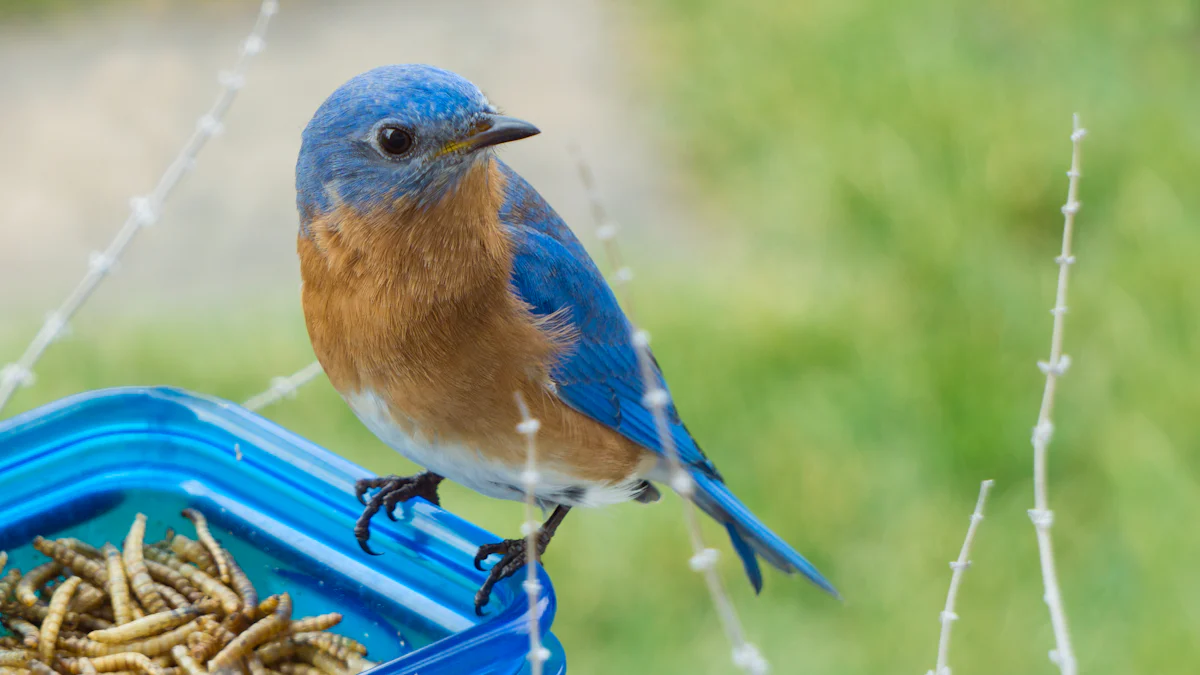
Soaking dried mealworms for birds is a game-changer. It softens their tough texture, making them easier for birds to digest. Plus, it boosts their nutritional value by unlocking nutrients and removing impurities. Did you know dried mealworms are packed with protein, fat, and fiber? Simply soak them, and you’ll give your feathered friends a hydrating, healthy treat.
Key Takeaways
- Soaking dried mealworms makes them softer and easier to eat.
- Birds need water, especially in summer or when nesting. Soaked mealworms give them water and energy.
- Offer soaked mealworms early or late in calm spots to attract birds.
Why Soak Dried Mealworms for Birds?

Benefits of hydration for birds
Have you ever thought about how important hydration is for birds? When you soak dried mealworms for birds, you’re not just softening them—you’re giving the birds a much-needed water boost. This is especially helpful during hot summers or in areas where water sources are scarce. Birds rely on hydration to keep their bodies functioning properly. Studies even show that hydration plays a key role in digestion by helping the avian gut balance water and nutrients. So, by soaking mealworms, you’re making it easier for birds to stay healthy and hydrated.
Easier digestion and nutrient absorption
Dried mealworms can be tough for birds to digest in their dehydrated state. Soaking them softens their texture, making them easier to chew and swallow. This also helps birds absorb nutrients like protein, fat, and fiber more effectively. These nutrients are essential for their energy and overall health. I like to mix the soaked mealworms into my regular bird seed mix or serve them alone in a dish. Either way, the birds seem to love it, and I know they’re getting a nutritious treat.
Supporting birds during breeding and dry seasons
Breeding season is a critical time for birds. They need extra energy and hydration to care for their young. Soaked mealworms provide both. In dry seasons, when natural food sources are limited, they become even more valuable. Offering soaked dried mealworms for birds during these times can make a big difference. You’ll notice how much more active and vibrant the birds look after enjoying this hydrating snack.
Step-by-Step Guide to Soaking Dried Mealworms for Birds

Materials needed for soaking
Getting started is easy. You only need a few basic items to soak dried mealworms for birds. Here’s what I use:
- Dried mealworms
- A bowl or container
- Fresh, clean water
That’s it! These simple materials are all you need to prepare a nutritious treat for your feathered friends.
Preparing mealworms for soaking
First, grab your dried mealworms and decide how much you want to soak. I recommend only soaking what the birds will eat in a day. This keeps everything fresh and safe for them. Place the mealworms in your bowl or container. Make sure there’s enough room for water to fully cover them. Then, pour in fresh water until the mealworms are completely submerged. It’s that simple to get started!
How long to soak dried mealworms
Timing is key here. I usually let the mealworms soak for about 15-30 minutes. This gives them enough time to absorb water and soften up without losing their nutrients. If you’re in a rush, 15 minutes works fine, but I’ve found that 30 minutes ensures they’re perfectly rehydrated. Once they’re soft and plump, they’re ready for the next step.
Post-soaking steps: draining and preparing for feeding
After soaking, drain the water using a sieve or colander. Let the mealworms sit for a minute to remove any excess water. Now they’re ready to serve! You can mix the soaked mealworms into your regular bird seed mix or serve them alone in a dish or hopper feeder. Either way, the birds will love them. Dried mealworms are nutritious and provide a great balance of protein, fat, and fiber to keep birds healthy and active.
Tips for Feeding Soaked Mealworms
How to serve soaked mealworms to birds
Serving soaked mealworms is simple and fun. I usually mix them into my regular bird seed mix or offer them alone in a dish or hopper feeder. Birds seem to love both options! If you’re worried about the mealworms escaping, try using a platform feeder or a rimmed dish. These work great for keeping everything contained. I’ve also noticed that placing the feeder near bushes or trees attracts more birds. They feel safer when there’s vegetation nearby. Another tip? Use lukewarm water to soak the mealworms. It softens them perfectly and enhances their natural aroma, making them even more appealing to birds.
Storing soaked mealworms safely
Once you’ve soaked the mealworms, it’s important to store them properly if you’re not feeding them right away. I always make sure to drain them thoroughly and keep them in an airtight container. If it’s a hot day, I pop the container in the fridge to keep the mealworms fresh. But here’s the thing—I only soak what I plan to use within a day. This way, I avoid any spoilage and ensure the birds get the freshest treat possible.
Best times and locations to feed soaked mealworms
Timing matters when feeding birds. I’ve found that early morning, around 6:30 or 7:00 am, is the best time to put out soaked mealworms. Birds are most active then and eager to refuel after the night. If you want to offer a second feeding, try around 5 or 6 pm. That’s when they’re preparing for the evening and looking for a final snack. As for location, I always place the feeders in quiet spots, away from windows or busy areas. This helps the birds feel safe while they eat. Watching them flock to the feeder is such a rewarding experience!
Soaking dried mealworms for birds is an easy way to boost their nutrition and hydration. Birds love the softer texture, and it’s great for their health. Simply mix the mealworms into your regular bird seed mix or serve them alone. You’ll notice happier, more active birds in no time. Try it today!
FAQ
How often should I feed soaked mealworms to birds?
I recommend offering soaked mealworms 2-3 times a week. Birds love variety, so mix them with seeds or serve them alone for a balanced treat.
Can I soak mealworms in anything other than water?
Stick to fresh, clean water. Avoid using flavored liquids or additives. Birds need natural hydration, and plain water works best for rehydrating mealworms safely.
What should I do if birds don’t eat the soaked mealworms?
Try mixing them into your regular bird seed mix or placing them in a hopper feeder. Birds often need time to adjust to new foods. Patience works wonders!


